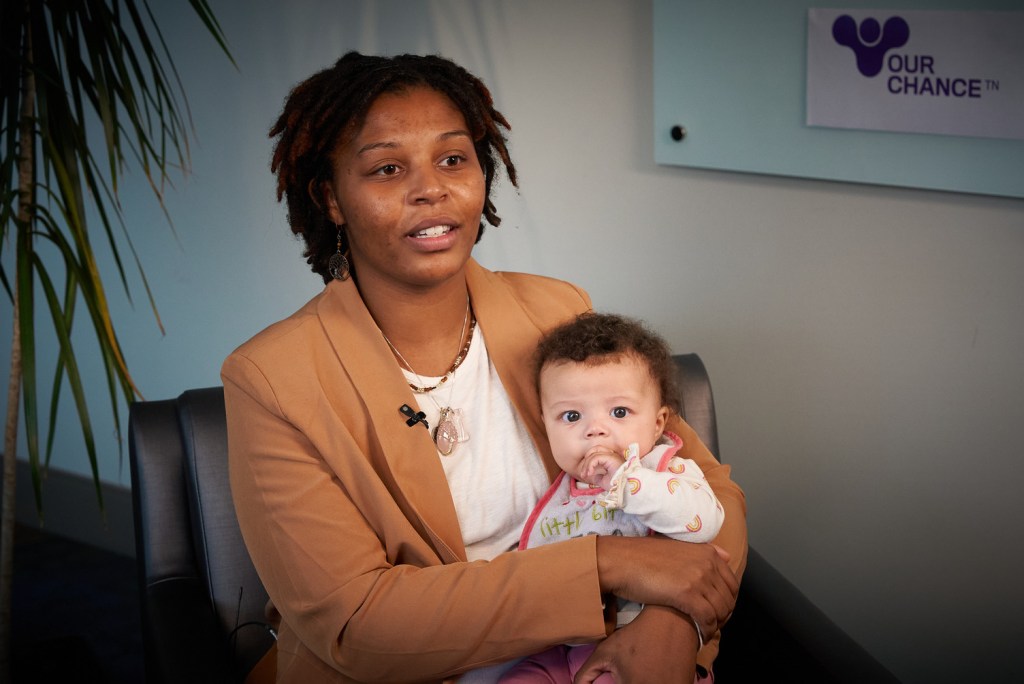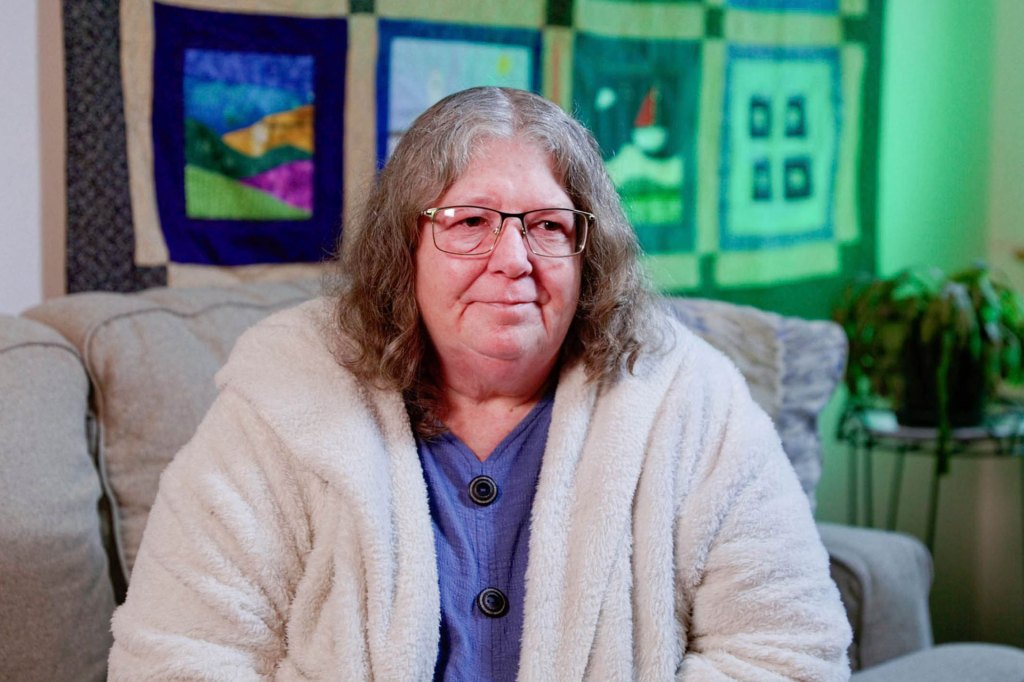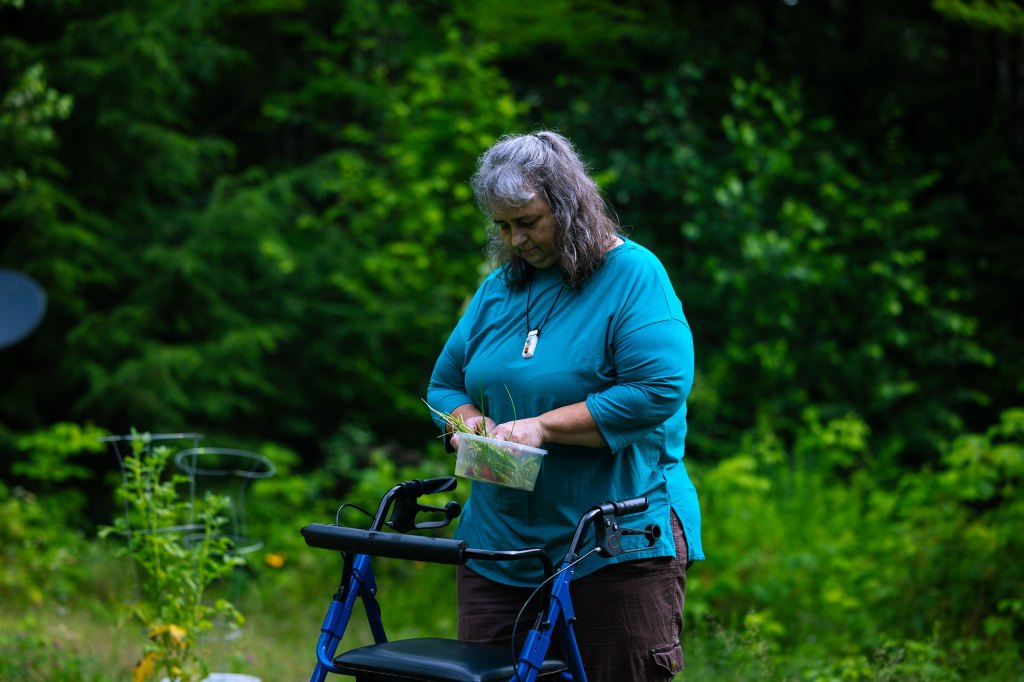
The benefits cliff, explained
A benefits cliff can make a family feel like their hard work really isn’t paying off or helping them get ahead. Why is the benefits cliff issue so hard to address? And what are some communities doing to tackle it?
By Gabriella Chiarenza, Fed Communities
October 5, 2023
What is the benefits cliff?
People may rely on public assistance benefits to meet their basic needs when their income dips below a sustainable level. These include supports like the Supplemental Nutrition Assistance Program (SNAP) for food, Medicaid for health care, and Section 8 for housing.
If a family’s income rises over any these programs’ set limits, it can trigger a partial or complete loss of benefits. A benefits cliff like this leaves families financially worse off. Their income isn’t low enough to qualify for benefits. But it’s still not high enough to afford all of their vital needs like food, housing, medical coverage, and child care.
Alternatively, a family might reach a benefits plateau. In that case, for each dollar earned, benefits lessen by a similar amount. A benefits plateau can feel like running in place: not falling further behind, but never getting ahead, either.
Both cliffs and plateaus can continue for years for some families. Both can disincentivize people from moving into or up within the workforce.
You might hit a benefits cliff if you get a new job.
Haley left an abusive relationship and is in addiction recovery as she works to move forward with her life. To support herself and her children, she started working as a house cleaner. Her modest income of $14 an hour immediately triggered a reduction in her benefits—SNAP and TANF—before she would be able to cover the added costs. She only learned she’d hit this benefits cliff when she reported her new income to the benefits office and then got a letter informing her of the resulting reduction to her SNAP and TANF benefits.

“At that moment, I was thinking that I was stable. I got a job, and I’m doing the things that I want to do,” Haley explained. “Making $14 an hour is not enough to keep your family afloat. But I lost my benefits because I was making too much. So, the moment I felt stable, they snatched them out from under me.”
What do we know about who experiences the benefits cliff?
People who use public benefits and earn up to about $60,000 a year may experience a benefits cliff if their income goes up. The benefits cliff disproportionately impacts families with children.
Consider this data point from the US Department of Health and Human Services. DHHS looked at how benefits cliffs and plateaus could affect families with children in which the adults earned less than 200% of the federal poverty limit. In 2023, 200% of that limit is $60,000 a year for a family of four. DHHS found that more than three million of these households would face a benefits cliff or plateau if their income went up.
These families may not know that what they are experiencing is called a benefits cliff. But community-level surveys and interviews show that people are feeling the effects. For example, the Tennessee Alliance for Economic Mobility conducted a survey and held focus groups with more than 200 lower-income parents and caregivers. Once the term was defined and described, 85% of these families said they had experienced a benefits cliff. Within that group, 63% said they had resisted working additional hours, 50% resisted getting a better-paying job, and one quarter turned down a raise, all for fear of hitting a cliff.

You might hit a benefits cliff if you return to work after having a baby.
Raven is a new mom with a baby under one year old. She took time away from working as a caregiver and restaurant server to take care of her daughter full-time. Now, as she looks to return to work, she’s worried about losing her SNAP and child care benefits before she’s able to cover the costs herself. It’s an added concern while she’s already grappling with leaving her daughter in care for the first time so she can take a job in the behavioral therapy field.
“Trying to get a job and child care at the same time is difficult,” Raven said. “It’s another layer on top of that when you’re doing it by yourself. I’m looking forward to getting back on my feet and participating in society. But I am a little anxious about it as a new mom.”
How are others in the economy affected by this problem?
The ripples of the benefits cliff go beyond a single family. Businesses also lose. The benefits cliff is one reason why employers might struggle to fill key roles in their companies. It keeps people out of the workforce who might otherwise step into jobs. In some career paths, it holds back strong workers who are otherwise ready and able to move up into higher-level roles in a workplace.
Employers may not know that the benefits cliff is a reason people aren’t taking jobs and promotions. They can misinterpret the reluctance as people not wanting to work or advance in their careers. Even if they do understand the problem, employers sometimes can’t afford to keep employees who refuse more hours or a promotion for fear of a cliff.
Ultimately, the benefits cliff can end up affecting everyone in the economy. People trying to move up years-long career ladders in fields like nursing, home health care, child care, and social work may be held back by one or more benefits cliffs along that path.
Those cliffs impact staffing levels at hospitals, schools, and care facilities. That means there may not be someone in a vital role to help or care for you or a family member when and where you need them most.
You might hit a benefits cliff if you are the primary caretaker of a teenager with special needs.
Laurie adopted her two grandchildren when they were young. Both children have special needs. Laurie became their full-time caregiver and so could not work a separate job. She relied on an adoption benefit to cover costs and ensure the children were covered for their health care needs. Her younger child, now a teenager, has diabetes and needs insulin. Laurie worries about what will happen when he becomes an adult. Once either starts working, the adoption benefit will be lost. She encourages her son’s interest in moving into a job, but she fears he won’t be able to afford his medicine on his own. And at 61, she fears she won’t be able to find a job that pays enough to support herself once the benefit is lost.

“I want him to go on with his life,” Laurie said. “I want him to work. I want him to have that good feeling of accomplishment, but there will be a price paid when that happens. It’s very scary. The minute you go to work, the benefits end. They shouldn’t end so quickly. Every home needs to be evaluated on their exact needs, and those exact needs need to be met, or we’re going to lose people in the system.”
What ideas and approaches are being tested now to address the benefits cliff?
It can be difficult to know when a benefits cliff is coming. Income thresholds to qualify for benefits can vary from state to state and from program to program. A minor raise at work can trigger a considerable loss in benefits. Often, people only find out they’re losing benefits when they call in to the office that administers the benefit to report their increased income.
New tools may allow families to see exactly where they might run into a benefits cliff or plateau and customize a plan to their individual situations. They enter information about their household, benefits, work situation, and the career path or job change they’re considering. Tools then provide information on how benefit levels may change with income increases over time. They also highlight where cliffs and plateaus loom, so families know when to be ready for them.
Such tools are now being tested and used in several communities across the country. Those developing and implementing the tools want to be sure they are in place where people might benefit from them the most. That might be in a benefits office or a one-stop career center.
For the tools to be most helpful, experts say, a dedicated coach should work with each person facing cliffs to walk through the tools and interpret the results. That coach can then also help each person decide on a plan for navigating their cliffs.
A team of experts at the Atlanta Fed continues to refine and test tools to help people learn about and deal with benefits cliffs and plateaus. Working with state officials, the Atlanta Fed team customizes the tools to include each state’s benefits programs and income thresholds. Versions of the tools are now available to people in every US state.
Currently, the team is also testing a tool that employers can use to understand where their employees might hit benefits cliffs or plateaus. In addition, the Atlanta Fed developed a Policy Rules Database that gathers all of the relevant policy information state by state in one place.
Agencies typically have specific, separated responsibilities. Benefits offices help people apply for and receive benefits and alert them when their benefits will be reduced or ended. Career centers assist with looking for and securing a job. Community programs provide gap coverage like food boxes and utility cost assistance if those resources exist in their area.
But people need connected resources to help them follow a path through a benefits cliff or plateau over the long term until they reach the other side. Programs and agency practices in several places around the country are currently evolving to do just that.
The six states of the New England region came together to work on benefits cliff challenges through the Whole Family Approach to Jobs initiative. A cross-state work group meets regularly to identify and link transitional resources people need as they move off of benefits. Some have aligned agency databases and practices that touch people affected by benefits cliffs. The group’s work has informed multiple bills enacted or under consideration in several states.
In Tennessee, a new pilot program is connecting the community-level resources of seven counties under one umbrella to help 900 families navigate the benefits cliff. It’s one of the largest and most comprehensive benefits cliff pilots to date.
This three-year Our ChanceTN pilot pairs each participating family with a coach who walks them through a cliff tool and helps them lay out and complete a plan for navigating their specific cliffs over time. Some families receive a transitional benefit to help them cover costs that arise as incomes increase and benefits lessen. Resource navigators connect families to needed help across the seven counties whenever a barrier comes up along their path.

You might hit a benefits cliff if you get a promotion and a raise.
When Mackeisha got promoted at her job, she received a raise of one dollar per hour. Mackeisha is a mom with four kids who works nearly full-time six days a week. Before her raise, her wages were low enough that she relied on SNAP for food assistance and a housing subsidy to help cover her family’s costs. Her raise pushed her over the income threshold for both programs. For the additional $200 or so she’d now be earning in wages each month, she lost more than $800 in benefits.
“That’s kind of what gets you the most,” Mackeisha said. “I’m trying to do better. They talk you into doing better so that you don’t have to always rely on having help. But it’s hard when you’re kicking me down when I do do better. It’s hard to go in there with a smile when you know you’re barely making it.”
Dedicated efforts on the ground to align resources and enable people to identify and navigate a benefits cliff can help those now grappling with cliffs. But eliminating the structural problems that cause cliffs and plateaus requires changing the larger system.
Several state legislatures have passed or are currently considering bills intended to help ease a benefits cliff or plateau into a gentler slope. They typically do so in one of two ways. The program change may raise the income threshold to qualify for a full or partial benefit so that people have more income to cover costs before they lose needed benefits. Or it may extend the period over which benefits are reduced as income rises, to avoid abrupt cliffs and give people more time to transition off of benefits.
Often, these program changes result from collaborative efforts between policy makers, agency staff, and community organizations that may help craft the language in the bills. Their work is deeply informed by people who have experienced benefits cliffs—people who know well what would help others going through it.
You might hit a benefits cliff if you are on disability and want to work more hours.
For 30 years, Kandie has lived with a chronic condition that limits her ability to work. She receives disability to help her cover some of her medical expenses and other costs. While the benefits help her to stay afloat, it’s important to Kandie to contribute to society through work. In the current system, people receiving disability benefits can only work a limited number of hours without losing the benefits they need to manage their health. In Kandie’s case, it would be too expensive for her to cover her medication costs without these benefits. But she’s frustrated that the disability program rules limit her when she feels she could be working more as her health allows.

“It’s just like that constant vicious cycle, that we say we want to allow and empower people to go to work, but then we’re going to take everything away that can help you go to work,” Kandie said. “It’s not fair, and it’s also not the way to treat somebody that you want to start contributing in the workforce.”
Losing health care benefits, particularly children’s health care benefits, can be a frightening cliff for families. Florida recently took legislative action to keep more families from falling over that health care benefits cliff.
Some benefits program income thresholds are based on the federal poverty limit, which in 2023 is $30,000 for a family of four. Previously in Florida, families were eligible to receive Children’s Health Insurance Program (CHIP) benefits if their income was under 200% of that limit. Under the newly passed bill, CS/CS/HB 121, as of January 1, 2024 families will continue to qualify for CHIP benefits until their income reaches 300% of the federal poverty limit, or $90,000 in 2023.
Another important benefits program for families is Temporary Assistance for Needy Families (TANF), which can cover a range of expenses for lower-income families including child care. Losing TANF suddenly can be stressful for working families.
In Maine, the legislature passed the 2019 measure LD 1772, known as the STEP bill. This legislation smooths out and extends the transition period from TANF. If a family’s income goes up, that increase doesn’t count toward their TANF eligibility for three months. After that, 75% of the increased income doesn’t impact eligibility, and so on over a gradual lessening of TANF benefits. Under this new policy, families have more time to adjust off of TANF as their income grows enough to cover the expenses.

You might hit a benefits cliff if you or others in your family have a health emergency.
Denise thought she would be the last person to ever hit a benefits cliff—or need benefits to begin with. Then her husband experienced a sudden medical event and her family quickly lost work, savings, and their sense of security. Soon, the family fell below the federal poverty level. She ended up applying for and getting multiple benefits to help meet her family’s needs, including MaineCare, Maine’s version of Medicaid. Fortunately, her husband recovered. Eventually both were able to return to work and saw their various benefits fall away as their incomes rose. MaineCare was the last benefit to go, and the one that scared Denise the most to lose.
“It was very frightening for me,” she said. “I remember sitting at dinner one night with my husband and looking at my kids, and we had just been disqualified for MaineCare. I remember thinking, well, if I stay home and I don’t go to work, we can keep our MaineCare. It was just this really quick, fleeting thought, because I really liked my new job and didn’t want to quit. But that season of our lives, for me, created a huge paradigm shift where benefits are concerned. I’ll never look at it the same way again.”
Want to learn more about the benefits cliff and strategies to address it?
Check out the Fed Communities benefits cliff series, which includes conversations with those experiencing the benefits cliff and working on the ground to tackle it. Explore the Atlanta Fed’s work to advance careers for low-income families here.






